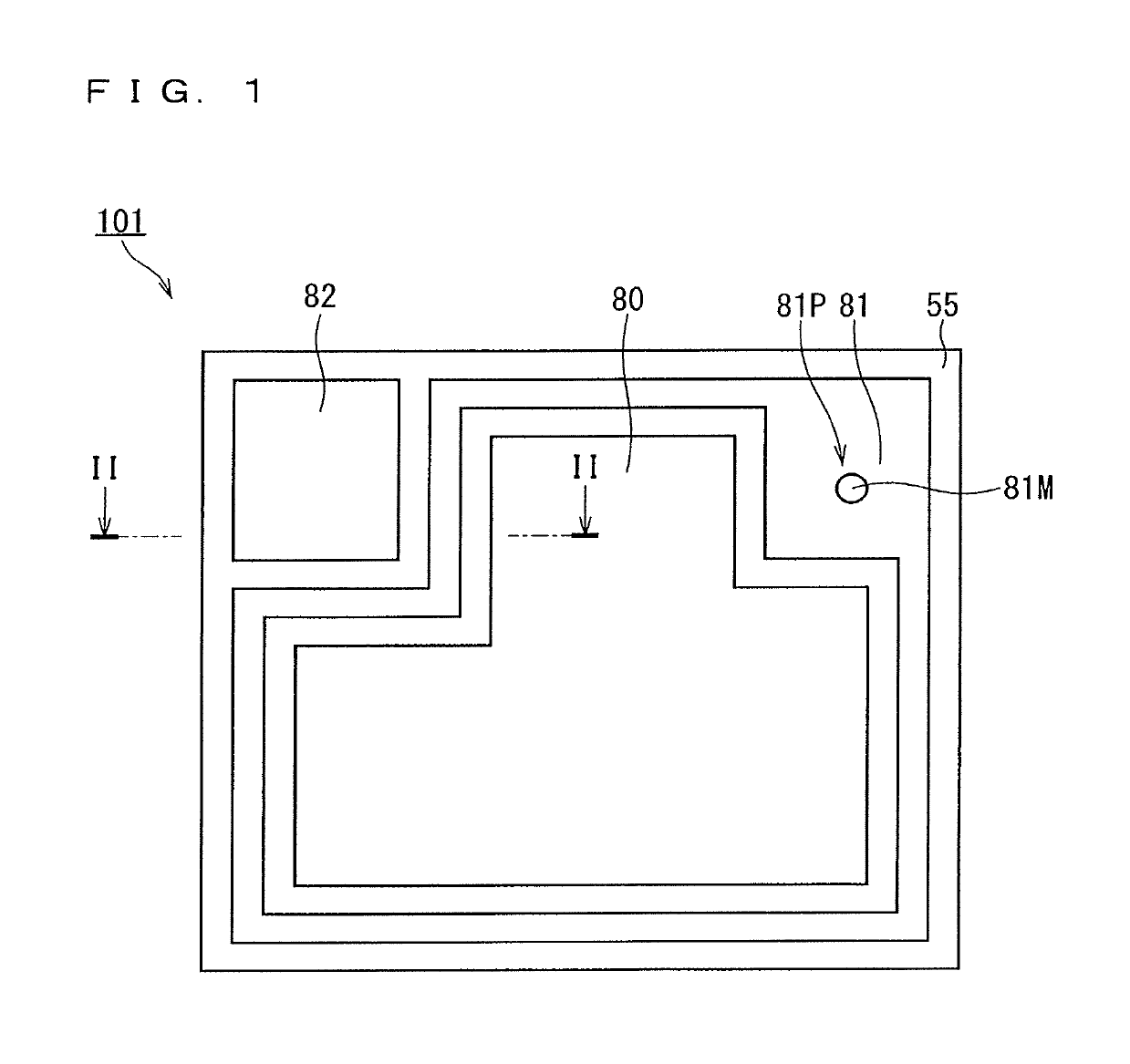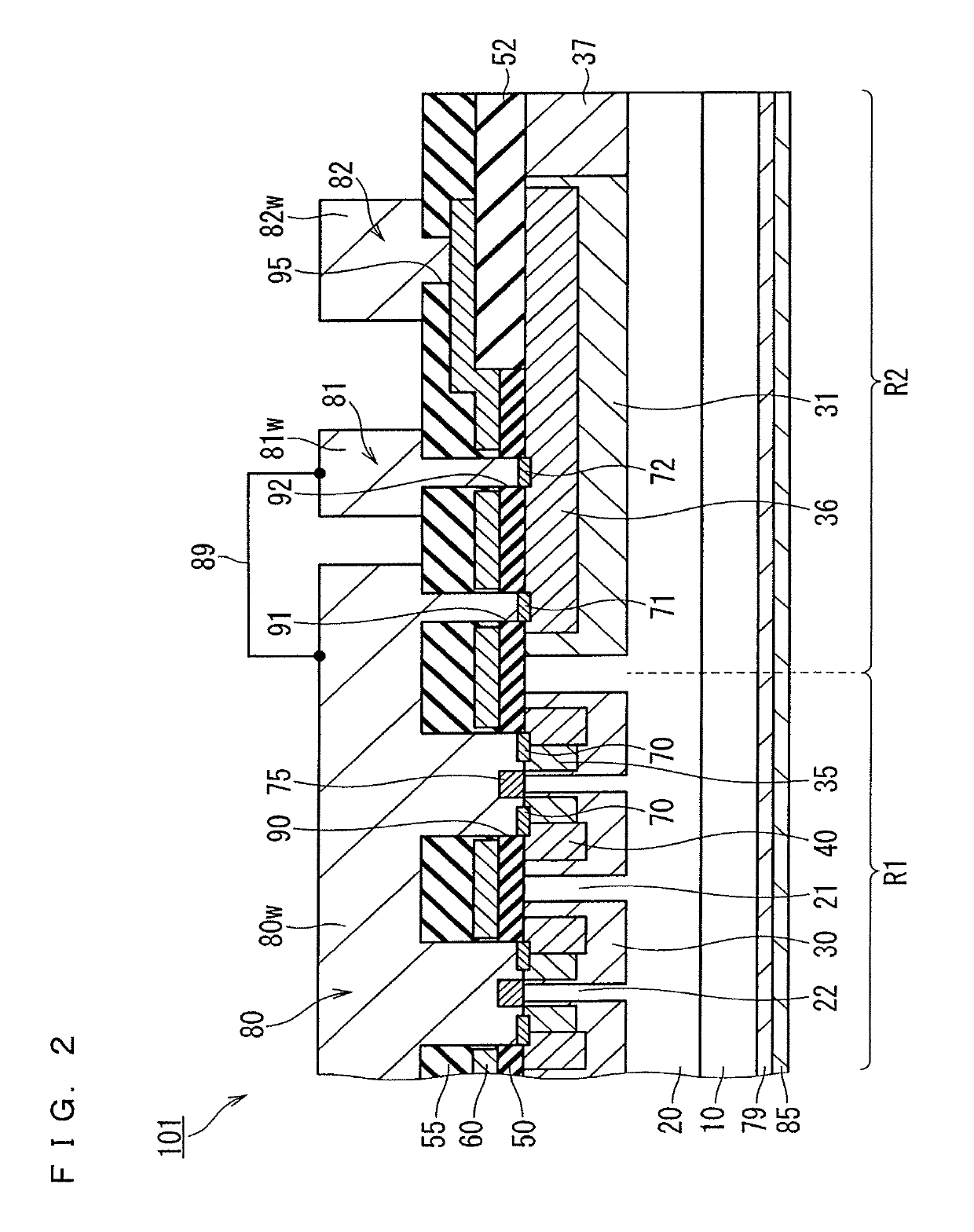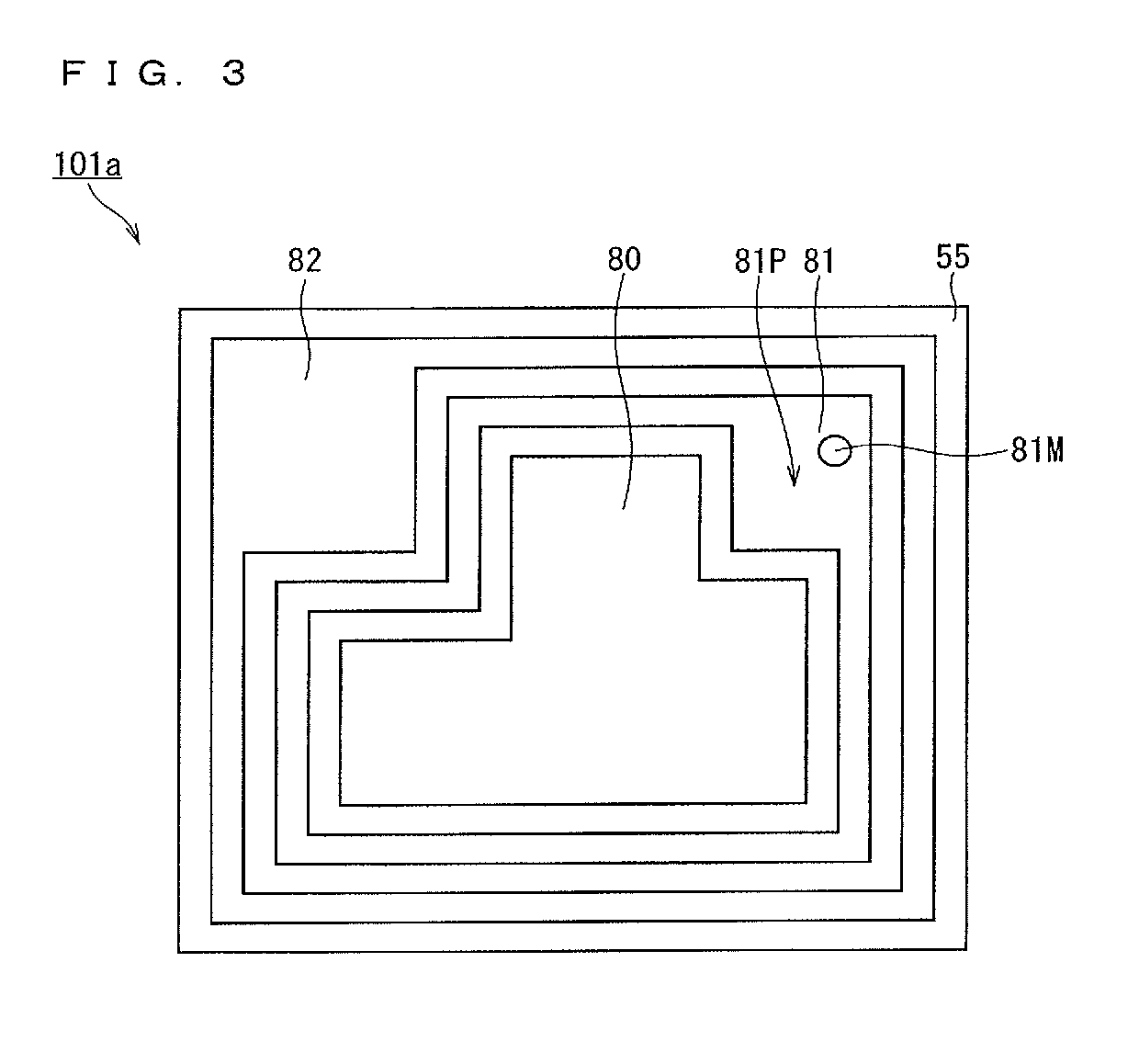Semiconductor device and semiconductor device manufacturing method
a semiconductor and semiconductor technology, applied in the field of semiconductor devices, can solve the problems of diodes degrading reliability similarly to p-n diodes, increasing forward bias of p-n diodes, and reducing reliability, so as to reduce stress test time, and suppress transistor characteristics caused by stress test
- Summary
- Abstract
- Description
- Claims
- Application Information
AI Technical Summary
Benefits of technology
Problems solved by technology
Method used
Image
Examples
embodiment 1
[0037](Structure)
[0038]A structure of a MOSFET 101 (semiconductor device) according to Embodiment 1 will be described with reference to FIGS. 1 and 2. The MOSFET 101 incorporates an SBD, which will be later described in detail.
[0039]The MOSFET 101 includes a substrate 10 (semiconductor substrate) having n-type conductivity (first conductivity type), a semiconductor layer on the substrate 10, a gate insulating film 50, a field insulating film 52, an interlayer insulating film 55, a source electrode 80 (first electrode), a test electrode 81 (second electrode), a gate electrode 82, an ohmic electrode 79, and a drain electrode 85 (third electrode). The semiconductor layer includes a drift layer 20 having n-type conductivity, a plurality of well regions 30 (first well regions) having p-type conductivity (a second conductivity type different from the first conductivity type), a well region 31 (second well region) having p-type conductivity, source regions 40 having n-type conductivity, an...
embodiment 2
[0099]With reference to FIG. 7, the field insulating film 52 extends to a position closer to the active region R1 in a MOSFET 102 (semiconductor device) according to Embodiment 2 than that of the MOSFET 101 (FIG. 2). In other words, a boundary between the field insulating film 52 and the gate insulating film 50 is positioned closer to the active region R1 than the contact holes 91 and 92 are. As a result, the contact holes 91 and 92 penetrate not only the interlayer insulating film 55 but also the field insulating film 52. Thus, the ohmic contact parts 71 and 72 are disposed in the contact holes 91 and 92 provided in the field insulating film 52, respectively.
[0100]Since the structures other than above are almost the same as those according to Embodiment 1, the same or corresponding constituent elements are denoted by the same reference numerals and the description thereof will not be repeated.
[0101]During a switching operation of the MOSFET 102, the potential of the well region 31 ...
embodiment 3
[0105]With reference to FIG. 8, a MOSFET 103 (semiconductor device) according to Embodiment 3 does not include the contact hole 91 unlike the MOSFET 102 (FIG. 7). Thus, the source electrode 80 and the well region 31 are separated by the insulating films. In a practical use of the MOSFET 103 according to Embodiment 3, the wiring part 89 needs to short-circuit the source electrode 80 and the test electrode 81 after application of the stress current to prevent the potential of the well region 31 from being in a floating state.
[0106]Since the structures other than above are almost the same as those according to Embodiment 2, the same or corresponding constituent elements are denoted by the same reference numerals and the description thereof will not be repeated.
[0107]According to Embodiment 3, the current to be applied by the test electrode 81 in the stress test can be prevented from leaking to the active region R1 through a current path passing through the contact hole 91. Accordingly,...
PUM
 Login to View More
Login to View More Abstract
Description
Claims
Application Information
 Login to View More
Login to View More - R&D
- Intellectual Property
- Life Sciences
- Materials
- Tech Scout
- Unparalleled Data Quality
- Higher Quality Content
- 60% Fewer Hallucinations
Browse by: Latest US Patents, China's latest patents, Technical Efficacy Thesaurus, Application Domain, Technology Topic, Popular Technical Reports.
© 2025 PatSnap. All rights reserved.Legal|Privacy policy|Modern Slavery Act Transparency Statement|Sitemap|About US| Contact US: help@patsnap.com



